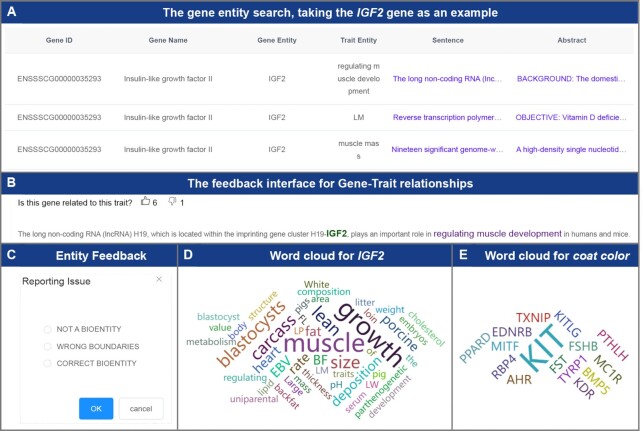Figure 6.
The main functions and usage of the Literature section. (A) The results of the Entity Search module, using the IGF2 gene as an example. The results contain genes and phenotype entities, and users can click the corresponding sentence or abstract to view the detailed information. (B) The feedback interface for Gene-Trait relationships. This allows users to give feedback on the reliability of relationships between genes and traits. (C) The feedback interface for entity recognition. Users can feed back the accuracy of entity recognition, which will assist the continuous optimization of the named entity recognition model. (D) The word cloud image generated by the Entity Cloud module, using the IGF2 gene as an example. From the word cloud image, users can infer that IGF2 may be related to muscle growth. (E) The word cloud image generated by the Entity Cloud module, using coat color trait as an example. From the word cloud image, users can infer that the KIT gene plays an important role in regulating this trait.

